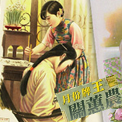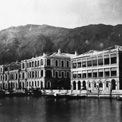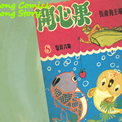The Hong Kong Festival was held three times by the government, in 1969, 1971 and 1973. During the week of the Festival, held around November and December, several hundreds of cultural and recreational activities were organized throughout Hong Kong Island, Kowloon and the New Territories, particularly in outdoor venues and busy hubs to make them accessible to people from all classes. Everywhere, colourful and fancy decorations were decked out to carefully craft an atmosphere of fun and merriment.
The Hong Kong Festival had its predecessor in the Hong Kong Week which was held in late October/early November, 1967. Hong Kong Week was co-organized by the Hong Kong Federation of Industries and the Trade Development Council, with sponsorship from commercial enterprises such as Shui Hing Co., Kung Sheung Daily and the Chinese Manufacturers’ Association. It featured a wide range of activities. Its aim, according to its organizers, was to promote Hong Kong products among Hong Kong people and expand the local market for these products. However, a closer look shows that most of the activities, which were cultural and recreational in nature, had little to do with Hong Kong’s manufacturing industry. No wonder contemporary observers believed that there was a connection between the Hong Kong Week and the 1967 riots – that after the violent struggles, organizers were keen to nurse the wounds and convey the message that now all was well.
After Hong Kong Week, the government decided to repeat the effort and in 1969, a similar event was held; it was now named the Festival of Hong Kong, the idea being that there should be a Festival for all the people of Hong Kong. The government even considered making 6th December, the first day of the Festival, an official public holiday. As the organizers explained, the aim of the Festival was to let the week’s many activities provide “entertainment, enjoyment and relaxation” to everyone, especially the young. The venues were to be as widely distributed as possible, and the best venues should be outdoors to in order to accommodate large numbers of participants.
Official documents, however, reveal the Festival’s deeper goals – to create a sense of civic pride and even a sense of identity among the people of Hong Kong. While providing entertainment and enabling the whole city to celebrate, the Festival stressed the sense of belonging and identity. Against the background of the 1967 riots, the immense historical significance of the Hong Kong Festival becomes apparent.
A report by the City District Officers on the first Festival of Hong Kong in 1969 pointed out both its strengths and weaknesses. In terms of effect, the City District Officers felt that the Festival might be regarded as a success in so far as it fulfilled the aim of entertaining citizens; besides, everything went smoothly and in a peaceful and orderly manner. However, whether these entertainment activities succeeded in enhancing people’s civic pride was more difficult to tell. After the 1971 Festival the Steering Committee felt more confident of its achievement: the organizing bodies were all dedicated to their tasks; it attracted citizens’ enthusiastic participation; it succeeded in generating a cheerful, festive atmosphere. The Steering Committee agreed that the Festival should be held again and recommended the establishment of a standing Hong Kong Festival Office. However, this report did not discuss the issue of people’s sense of belonging.
Originally, the plan was to hold an even larger scale Festival in 1975. It was to include international sports events which would also be tourist attractions. The plan however, was aborted as a result of the 1973-74 recession, and the Hong Kong Festival was never held again after the third one.
Documents
- Hong Kong Week 1969 Committee Organisations and Terms of Reference
- Festival of Hong Kong, 1969
- GIS Press Release: Governor Tells Colony To Have A Good Time
- Statement By A de O Sales, Chariman Organizing And Executive Committees, Festival of Hong Kong
- The advice of Rafeek about Festival of HK (1)
- The advice of Sales about Festival of HK (1)
- The advice of Mr Rafeek about Festival of HK (2)
- The advice of Sales about Festival of HK (2)
- GIS Press Release: Right Combination of Work and Play: Hallmark of happy and successful community
- Mammoth Festival is Hong Kong's Biggest Community Project






